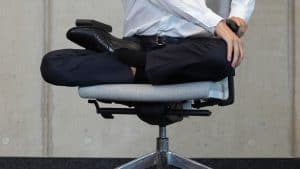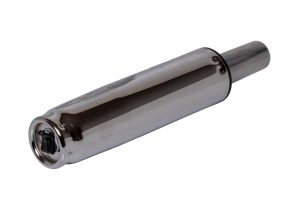Pregnancy is both important and stressful for most women. Their body keeps changing, and hormonal fluctuations put both physical and mental strain on the expecting mother. Because there are too many variables during this time, there are a lot of small things that need to be taken into consideration in the day-to-day lifestyle. One such thing is how you sit and what posture you take.
Posture is of utmost importance – the right one can provide the baby ample room to move around while the wrong posture can not only increase the strain on the mother’s body but can encourage the baby to move into the wrong position in the pelvis before labor.
Though it sounds frightening but don’t worry, you can make sure everything can be sorted out by following some basic tips and taking precautions.
So if you are one of the working pregnant women who has to spend much of her waking hours at her desk in the office or home, here are a few tips and tricks that can help you while sitting on a chair during pregnancy. Let’s start with some frequently asked questions first.
Table of Contents
How to Sit in an Office Chair During Pregnancy?
Frequently Asked Questions
- How Long Should a Pregnant Woman Sit
- Does Sitting Position Affect Your Baby
- What Positions Should be Avoided During Pregnancy?
- Can You Sit in a Massage Chair While Pregnant?
How to Sit in an Office Chair During Pregnancy?
Thanks to modern lifestyle (and Capitalism), it is not always possible for expecting mothers to take leaves before birth until the last moment. As such, working long (and sometimes even short) hours in the office sitting on a chair can be the cause of extreme discomfort and also detrimental to the baby.
Though a lot of offices provide good ergonomic chairs, not all do. But that doesn’t mean we can’t set things straight on our own! Here are some really practical and easy to follow tips on how to sit on an office chair (good quality or not) during pregnancy that will help you maintain a good posture:
- A neutral body position means shoulders rolled back, back straight, arms comfortably resting on armrests of the chair and buttocks touching the base of the seat with feet firmly on the ground. The knees and hips should be at an angle of 90 degrees and at the same level. This is the best position to sit and helps bear the pressure on the spine.
- Using lumbar support is another way to relieve the pressure on the spine, which is increasingly put under strain as the pregnancy advances. Since the uterus takes up so much space and the body’s center of gravity is off, leaving it up to the spine to carry the burden. So using lumbar support, which can be a cushion or even a rolled-up towel, really eases things for the lower back while also making it easier for the mother to sit comfortably.
- The feet should be pressed firmly on the ground and should be flat. This makes sure your weight is distributed evenly across and avoids putting any one part under more stress than others.
- Elevate your legs a bit with the help of a footstool or a box. This maintains the weight and provides proper support while improving the circulation and keeping the swelling in check.
- Move the chair closer to the desk so that you don’t have to lean forward uncomfortably while working. Your back should be properly supported at all times, so keep the distance between the desk and chair short and work while sitting comfortably.
- The chair should be firm enough and set at an appropriate height so as to put the least strain on the body while working.
- Take a short break after sitting for around 25-30 minutes. Go for a walk, or you can do some light stretches as advised by the doctor.
Frequently Asked Questions
How Long Should a Pregnant Woman Sit?
Whether it is the fitness ball or the best office chair, sitting for too long is never advised. At most, sitting for 30 minutes at a time and then getting up to take a short walk is the best. But if you have some extra conditions like back pain, it’s better to sit as little as possible. Even when you are sitting, make sure you maintain good posture so that your lower back gets proper support.
Does Sitting Position Affect Your Baby?
It does, and depending on the posture, the effect can be positive, negative, and outright wonderful!
Babies move around a lot, especially during the later months of the pregnancy and the mother’s sitting posture can affect the baby’s position in the womb. That’s why the use of fitness balls during the last months of pregnancy is encouraged by a lot of hospitals and midwives.
These fitness balls help the expecting mothers to sit in the right posture, which encourages the baby to move in the right position toward the pelvis too, in preparation for the birth.
What Positions Should be Avoided During Pregnancy?
Now that we know how to sit, let’s take a look at how not to sit.
- Any position that makes your pelvis tilt backward is a big no-no. Not only does it put more strain on your back, it adversely affects the baby’s position in the womb too. So make sure your pelvis is leaning forward naturally while sitting. The neutral sitting position and fitness balls both aid this.
- Do not cross your legs while sitting. It hampers circulation, makes the pelvis tilt backward, and causes unnecessary strain to the body.
- Avoid slouching as it puts pressure on the back and the womb.
- Don’t bend, and don’t turn your waist. Soft and cautious movements are the best, and if you need something, turn your body as a whole.
Though pregnancy is indeed a stressful time, just a few precautions and a little change in regular habits can make it a lot easier, especially if you are a working woman.
Can You Sit in a Massage Chair While Pregnant?
Massage chairs can be a blessing at times when your whole body is under strain, and your back and legs are aching. Massage chairs can help you relax during the stressful pregnancy months too, but if and only if you take care of the following points:
- Don’t use massage chairs during the first three months of your pregnancy because it is the most crucial time with the body going through countless changes. It is the most fragile time period for the baby as well, so avoiding things that are overly stimulating is better.
- If you have a history of miscarriage or problematic pregnancy, it is best to avoid massage chairs.
- Some massage chairs come with heating pads. Avoid these at all costs since the sudden rise in your body temperature may cause the baby’s heartbeat to rise too, and being in a stage of development, it can adversely affect your baby’s future health.
- One more thing to avoid is a massage chair with pressure points. An expecting mother’s body is already really sensitive, and the use of pressure points on top of that is very dangerous and can even cause miscarriage in the worst-case scenario.
- During the later months of pregnancy, if you find that the massage chair is too small for you to be comfortable in, give up on the idea and don’t try to sit on it by force. It’s never a good idea to push your body during pregnancy unless you are already in labor and ready to give birth.
To be even safer, instead of using massage chairs, you can go for a traditional massage by someone experienced. Your body will feel a lot better, and since it’s someone who knows what they are doing (unlike a machine working with pre-set conditions), the chances of any problems occurring are much lower.
Now that we are clear on these things, let’s get to our main topic of the day, that is, how to sit on an office chair during pregnancy and what are some actions you must absolutely avoid while sitting.
The Bottom Line
I know that it’s quite a lot of points, but since the entire time period is very sensitive and the mother’s body is always under a lot of stress, we can only take these small but numerous precautions seriously in the view of good health for both the mother and child.
Knowing the right chairs for pregnancy will make you feel like you have the right support and also make you feel comfortable. It will help your blood flow to be as you need it to be. So use a chair that meets the need to keep your back comfortable and you supported.





